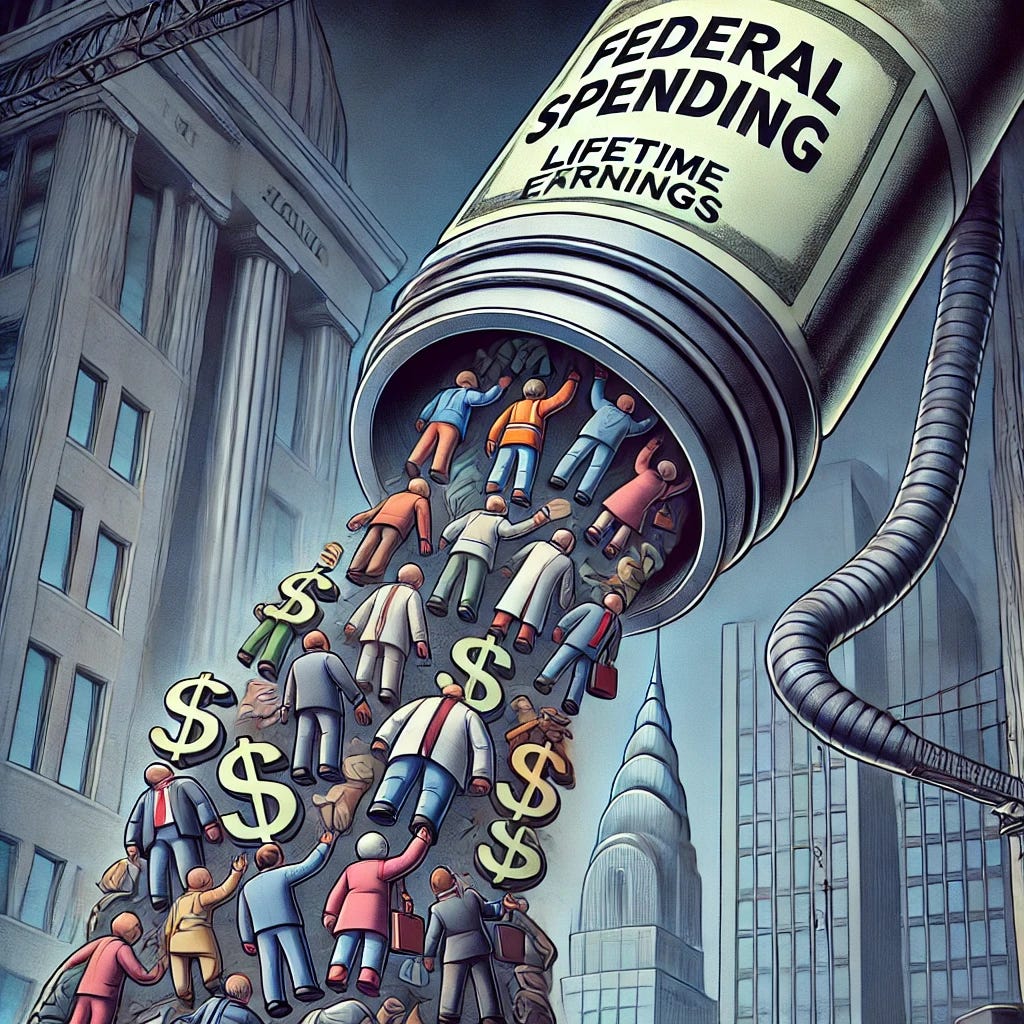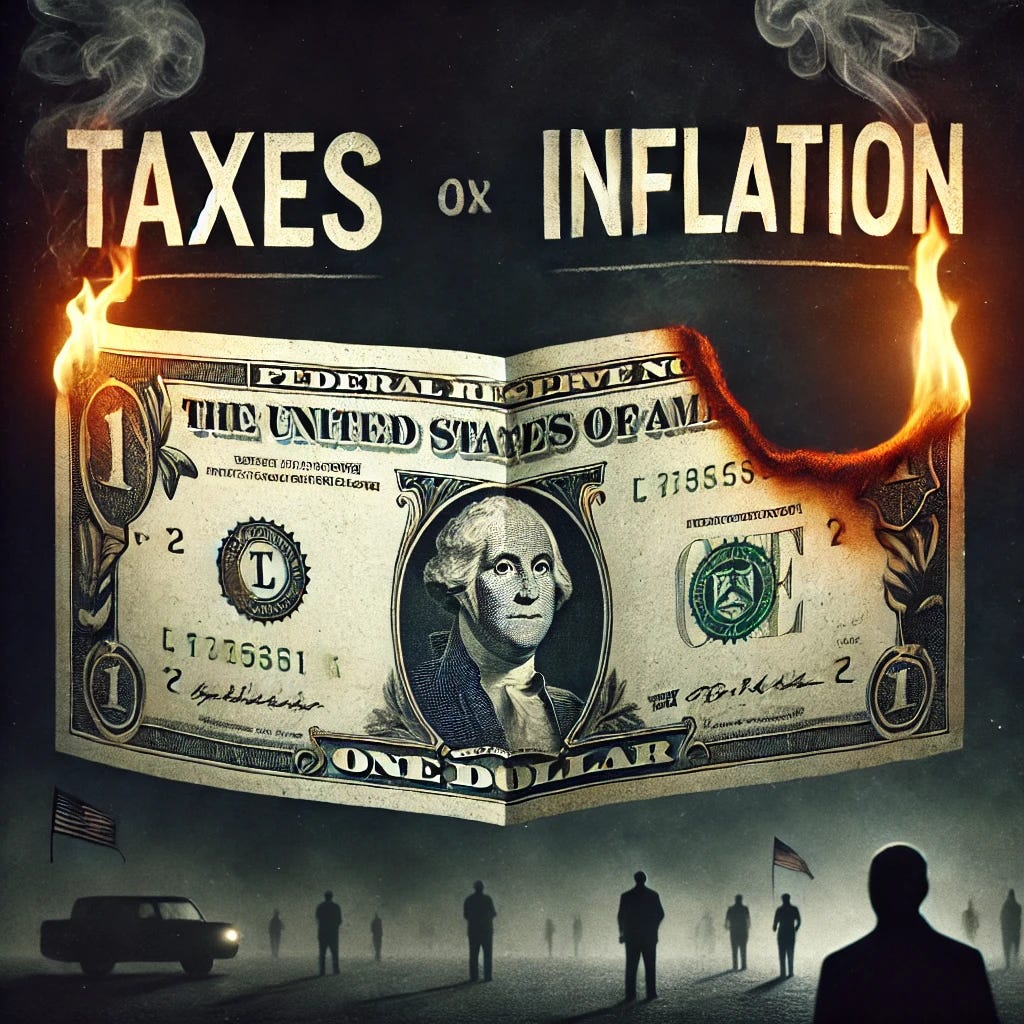Imagine your entire professional life laid out end to end. Every morning clocked in, every lunch break, every late-night hour or weekend hustle—culminating in a certain sum total. Financial planners often call this “lifetime earnings,” and it represents the financial economic impact an individual can have, in total, over their career. According to rough estimates, the average U.S. citizen might earn somewhere around $1.475 million over the course of their life. This figure, of course, will vary by education, location, and occupation; but it offers a meaningful baseline for perspective. Nor does it account for our non-financial actions, yet it serves as a worthwhile measure of influence.
Now compare that number—nearly one and a half million dollars—to the sums the United States Federal government navigates in a single year. It’s easy to look at abstract figures like “trillions” and get lost. But setting these amounts side by side with something as personal as your lifetime of work can shake us from our complacency about large-scale finance. The results are staggering.
Annual Money Creation vs. Your Lifetime Earnings
One way to consider the federal government’s influence is to look at new money introduced into the economy—often associated with deficit spending or policy actions that exceed tax revenues. In a recent fiscal year, that “newly created” money amounted to approximately $1.8 trillion. Compare that to an individual’s average lifetime earnings:
$1.8 trillion / $1.475 million ≈ 1.22 million lifetimes.
In other words, in just a single year, the federal government’s deficit spending alone can represent the sum total of around 1.22 million American working lives.
Total Federal Spending:
4.58 Million Lifetimes in a Single Year
Stepping back further, the federal government’s total spending in one year—covering everything from Medicare to national defense—landed at around $6.75 trillion. Stack that against the same lifetime-earnings benchmark:
$6.75 trillion / $1.475 million ≈ 4.58 million lifetimes.
When you consider that nearly 4.58 million average working lives’ worth of income is spent annually-a little over 1% of the population-you get a visceral sense of how much sway the federal budget has over the country’s economic narrative. The figure becomes less abstract when you picture millions of people—whole states’ worth of men and women—whose combined lifetime incomes match what the government wields in a single fiscal year.
Discretionary Spending:
Over a Million Lifetimes Just for the “Negotiated” Slice
Not all federal spending is automatic (like entitlement programs). There’s a portion—discretionary spending—that Congress must actively negotiate each year. This category includes high-profile areas such as defense, education, transportation, and numerous agencies. In one recent cycle, discretionary spending was around $1.6 trillion:
$1.6 trillion / $1.475 million ≈ 1.08 million lifetimes.
So just for the part of the budget that’s debated annually, the government draws on an amount equal to over a million full careers. This is the “smaller” segment of the budget, yet it alone outstrips the lifetime earnings of more people than many large metropolitan areas hold.
Context: Percent of GDP
It’s also worth looking at these sums in relation to the nation’s overall Gross Domestic Product (GDP)—the value of all goods and services produced in the United States. With a U.S. GDP of about $29 trillion, total federal spending comes in around 23.3% of that figure; discretionary spending takes up about 5.5%.
While these percentages might appear relatively modest, in raw dollars they reflect many countries worth of economic activity. For better or worse, the concentration of such resources in the hands of a single entity has a far-reaching impact on everything from employment to technological innovation to global security roles.
Reflecting on the Scale and Its Consequences
Seeing federal spending and money creation measured out in “lifetimes” hints at how deeply these policies influence the average person’s economic destiny. Whether you interpret that influence as positive—paving roads, ensuring national defense, funding education—or intrusive—steering individual choices via spending, taxation, and monetary policy—depending on your perspective.
But it’s hard to deny that:
The Federal Government’s Economic Footprint Is Monumental.
When we talk about 4.58 million lifetime earnings in a single year of spending, we’re reminded that federal decisions on budgets or deficits can overshadow an immense portion of the private economy.Policy Impacts Ripple Out to Everyone.
Because such spending comes with either taxation, borrowing, or currency creation, individuals throughout the country are inevitably touched—through wages, cost of living, interest rates, job markets, and beyond.Scrutiny and Accountability Are Key.
Given the magnitude of funds at stake, it follows that there should be robust debate on how these resources are allocated. When a single budget line might be measured in tens or hundreds of thousands of “personal working lives,” careful deliberation feels more necessary than ever.Personal Perspective Fosters Awareness.
People sometimes feel removed from the impact of federal budgets—“they’ll spend what they spend.” Yet, when we reduce the numbers to how many lifetimes it takes to match a single year of government spending, we see plainly why it matters.
Bringing Thoughtful Engagement
These calculations do not claim that every dollar is wasted or that the government shouldn’t spend money at all. Rather, they underscore how governmental financial power dwarfs millions of individual’s resources. It’s a reflection of scale—something to keep in mind as policy is shaped at the highest levels.
From household budgets to global issues like climate, infrastructure, and technological advancement, the government’s purse strings affect each corner of life. Whether we’re advocating for programs or calling for cuts, a sense of proportion can guide more reasoned conversations.
Seeing the numbers in terms of “lifetimes of earnings” is a way to personalize trillions, bridging the gap between intangible figures and our everyday realities. It’s an invitation to ask: Are our personal values and priorities represented? Do we believe the government’s decisions align with the lasting well-being of the public? (Waste, Fraud and Corruption appear to be at all-time highs and need to be removed by their roots.)
That inquiry—backed by perspective and accountability—lies at the heart of a robust republic. And it starts with understanding just how big our federal finances really are, especially when measured against the uniquely human scale of a single, working lifetime.
A Final word.
The numbers speak for themselves. With 333 million Americans each generating roughly $1.475 million over a lifetime—totaling about $491.6 trillion—the federal government’s $4.9 trillion spending in a single year is staggering.
In only 100 years, at current levels, it would absorb the entire economic output of the nation’s working lives. This isn’t just a financial mismatch—it’s an imbalance of power. When government spending overshadows the very earnings of the people, it calls into question the principle of a government truly “of the people, by the people, for the people.” It’s time to reexamine and radically scale back federal influence so that our collective economic legacy remains in the hands of those who earn it.
We must reduce the scope and scale of government: replace it with our own responsibility, to us and ours. There is no other way up the staircase to heaven.
When God Asked Atlas:
“What do you want?”
Atlas asked not for a lighter load to bear,
but for broader shoulders with which to bear it.








